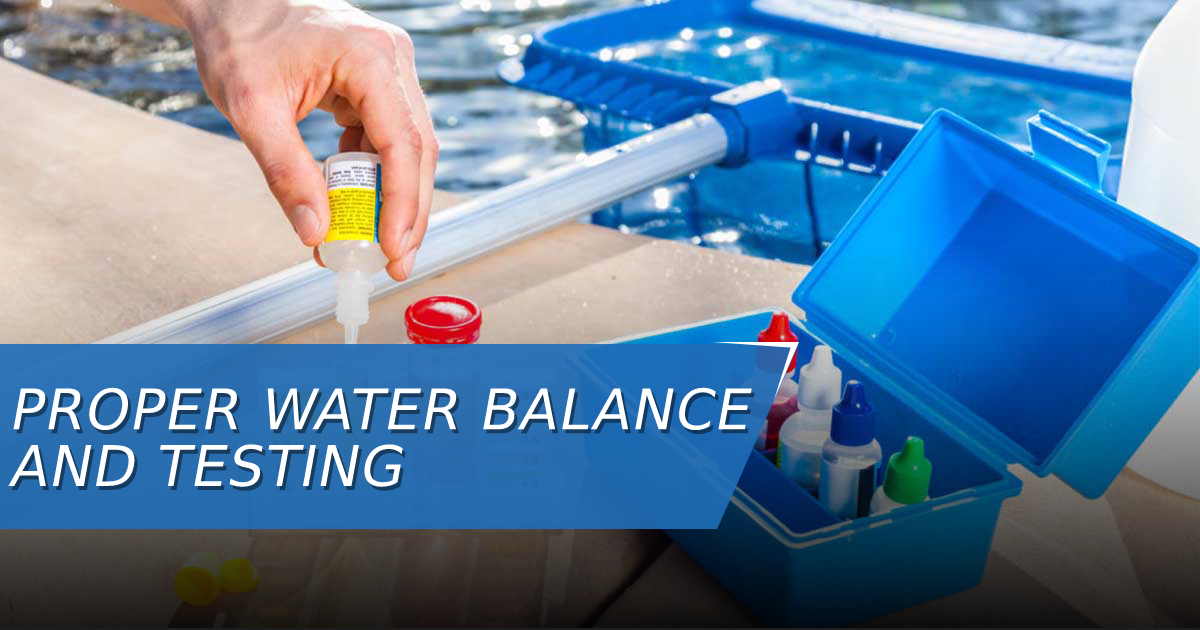Proper Water Balance and Testing
Maintaining proper levels in your pool water is like a balancing act. Whenever chemical levels in your pool water are off, problems occur. To maintain a well-functioning, sanitary swimming pool, regular pool water testing is recommended. Here’s what you need to know:
Frequency
How often you test your pool water depends on several factors, such as daily air and water temperature, and frequency of usage.
Here are some guidelines on how often you should check your pool’s levels:
- Chlorine and pH – 2 to 3 times a week
- Total alkalinity – Once a week
- Calcium hardness – Once a month
- Total dissolved solids – Once a month
- Metals – Every 3 to 4 months
Testing kits
Most pool testing kits are fairly easy to use, as long as you follow instructions. Some kits provide result analysis through an app or their official website, or you can bring the kit to your local pool supply store.
Remember to use water drawn from a depth of at least 18 inches for accurate results.
- Pool test strips – Test strips are a common and inexpensive type of water testing kit, and they are fast, easy to use, and are fairly accurate. All you need to do is dip them in the water, and you get results within seconds.
- Liquid test kits – While liquid kits are more expensive than test strips, they are considered a more reliable testing tool. Most kits make use of reagents, which are added to the sample water. Results are read through included comparators.
- Digital testers – Digital pool testers are extremely easy to use and provide prompt, accurate results, in exchange for a steeper price tag. These water-resistant devices feature electrodes that can read chemical levels in pool water, with readings shown through an LCD display.
Recommended chemical levels
The most important factors to balance are pH levels, total alkalinity, and calcium hardness. Below are recommended levels you should maintain for your pool:
- pH – pH levels represents your pool water’s acidity or basicity. It ranges from 0 to 14, with 7 as the neutral point. Anything below 7 is considered acidic, while anything above is basic.
Maintaining a pH level of 7.4 to 7.6 is ideal. A level above 7.8 causes scaling, which allows deposits to build and water to cloud, and also reduces your chlorine’s potency. A level below 7 causes an acidic condition or a corrosive pool environment.
- Total alkalinity – Total alkalinity is the measurement of alkaline, carbonate, and hydroxide substances in pool water. This goes hand-in-hand with pH, as alkalinity bolsters pH and helps keep it stable.
Maintaining a total alkalinity level of 80 to 120 ppm is recommended. You can raise the alkaline level by adding a base (look for products labeled “alkalinity increaser”), or lower it by adding an acid.
- Calcium hardness – Calcium hardness is your pool water’s softness or hardness measurement. Hard water is rich in calcium or magnesium content, which can make your water cloudy and can cause particle deposits on pool surfaces, ladders, or lights.
Hardness levels below 400 ppm are recommended, but the best range is 180 to 220 ppm.

